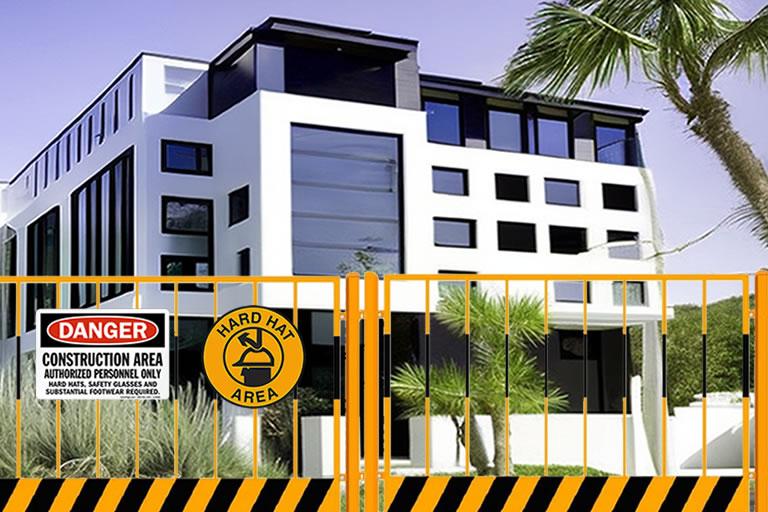Commercial Building Design | 10 Creative Ideas
Explore innovative and inspiring commercial building design ideas. Elevate your space with creative concepts for offices, retail, and more
The Art and Science of Commercial Building Design
In the modern urban landscape, commercial building design stands as an iconic representation of innovation, functionality, and architectural prowess. The design of these commercial buildings isn’t merely about aesthetics; it’s a harmonious blend of art and science, driven by a multitude of factors that range from purpose and location to sustainability and user experience. Commercial building design is a multidimensional endeavor that marries creativity with practicality, resulting in structures that profoundly shape the way we work, shop, and interact with our surroundings.
The Fusion of Aesthetics and Purpose
Commercial buildings come in various forms: office complexes, retail spaces, hospitality establishments, and mixed-use developments. Each category demands a unique design approach that aligns with its intended purpose.
Office Spaces: Designing office spaces is a delicate balancing act between fostering productivity and creating a conducive, inspiring environment. Open layouts encourage collaboration, while private workspaces support focused tasks. Incorporating natural light, ergonomic furniture, and adaptable layouts contributes to a comfortable and efficient commercial workspace design.
Retail Environments: Retail buildings need to captivate and entice customers. Their design must accommodate merchandise displays, foot traffic flow, and branding elements. The façade, layout, and interior design work in harmony to create an immersive shopping experience that reflects the brand’s identity in commercial retail building design.
Hospitality Structures: Hotels and restaurants prioritize guest comfort and experience. The design incorporates inviting lobbies, cozy rooms, and ambient dining spaces. The architectural style often complements the destination’s culture, offering a memorable stay or meal within commercial hospitality building design.
Mixed-Use Developments: These complexes integrate residential, commercial, and sometimes industrial spaces. Their design encourages a sense of community by providing amenities, green spaces, and convenient access to work and leisure activities in mixed-use commercial building design.
The Role of Location
The location of a commercial building profoundly influences its design. Urban vs. suburban settings, climate considerations, local regulations, and nearby infrastructure play pivotal roles in shaping the architectural approach.
Urban vs. Suburban: Urban environments often require vertical designs to optimize limited space, a crucial aspect of urban commercial building design. Suburban areas offer more horizontal possibilities, enabling larger layouts and parking facilities in suburban commercial building design.
Climate Considerations: The local climate impacts energy efficiency and material choices in energy-efficient commercial building design. Hot climates demand shading strategies and cooling systems, while cold climates require proper insulation and heating solutions for climate-responsive commercial building design.
Regulations and Infrastructure: Local building codes and regulations dictate design parameters for commercial building design compliance. Proximity to transportation hubs, utilities, and other amenities influences the building’s accessibility and functionality in commercial building design planning.
Sustainability and Green Design
In the era of environmental consciousness, sustainability has become a driving force in commercial building design. Green design prioritizes energy efficiency, reduced carbon footprint, and minimal environmental impact.
Energy Efficiency: Implementing energy-efficient systems like LED lighting, smart HVAC controls, and solar panels reduces energy consumption and operating costs in energy-efficient commercial building design.
Material Selection: Opting for eco-friendly materials and construction techniques minimizes resource depletion and waste generation in sustainable commercial building design.
Biophilic Design: Incorporating nature through green walls, indoor plants, and ample natural light improves indoor air quality and occupants’ well-being in biophilic commercial building design.
Net-Zero Buildings: These structures generate as much energy as they consume, leveraging renewable energy sources and advanced insulation for net-zero energy commercial building design.
User Experience and Interior Design
The interior design of commercial buildings profoundly affects the occupants’ experience. A thoughtfully designed interior promotes comfort, functionality, and even productivity.
Layout Flexibility: Adaptable layouts accommodate evolving needs. Movable partitions, modular furniture, and multi-purpose spaces enhance flexibility within commercial building interior design.
Wayfinding: Intuitive navigation through clear signage and strategically placed landmarks prevents confusion and enhances user experience in commercial building interiors.
Acoustics and Lighting: Proper acoustics and well-balanced lighting reduce stress and promote a productive environment within commercial building interiors.
Branding Integration: Interior design elements can reflect a brand’s identity, creating a cohesive and memorable atmosphere in brand-conscious commercial building design.
Technological Integration
Rapid technological advancements are reshaping commercial building design. Integrating technology enhances efficiency, security, and user experience.
Smart Building Systems: Automated HVAC, lighting, and security systems optimize resource usage. Occupants can control settings through apps, improving comfort within smart commercial building design.
IoT Connectivity: The Internet of Things (IoT) enables devices to communicate and share data. This can lead to predictive maintenance and improved building management in IoT-enabled commercial building design.
Data Utilization: Sensors collect data on occupancy, energy usage, and more. Analyzing this data informs design decisions for future improvements in data-driven commercial building design.
Building Retrofit and Adaptive Reuse
As sustainability gains prominence, commercial building retrofit and adaptive reuse have become essential aspects of design. Retrofitting existing structures involves upgrading systems and elements for energy efficiency and modern functionality.
Building Retrofits: Retrofitting involves updating outdated systems, such as HVAC and lighting, to align with current energy efficiency standards. This extends the lifespan of buildings while reducing their environmental impact.
Adaptive Reuse: Converting old structures for new purposes breathes new life into historical landmarks. Adaptive reuse preserves the building’s heritage while meeting contemporary needs, such as transforming old factories into trendy office spaces or historic warehouses into vibrant shopping centers.
Elevating Accessibility: The Role of Elevators
Elevators are vital components of modern commercial building design that ensure accessibility and efficient vertical transportation. They serve as both functional necessities and architectural focal points.
Efficiency and Safety: Elevators are designed for smooth, rapid, and safe vertical movement within a building. Cutting-edge technology ensures that they operate efficiently, minimizing wait times and energy consumption.
Aesthetics and Design: Elevators are no longer mere utilitarian boxes. Their design is integrated into the building’s aesthetic, featuring sleek finishes, atmospheric lighting, and panoramic views that transform the elevator ride into a memorable experience.
Accessibility: Elevators ensure inclusivity by providing easy access for individuals with disabilities or limited mobility. They play a crucial role in making buildings compliant with accessibility standards.
Cellular Phone Lines Advantages: The integration of cellular phone lines within elevators is transforming the way occupants interact with vertical transportation. Moreover, cellular connectivity allows for emergency communication, ensuring swift response during critical situations.
Elevator Cellular Phone Lines
How to eliminate the cost of traditional elevator phone lines and save 35% or more. Our cellular elevator phone lines conform to ASME, ADA, and IBC codes, encompassing all requirements of the Arizona elevator code.

Building Security: Ensuring Safety and Protection
In the realm of commercial building design, security is paramount. Buildings are designed with advanced security systems to safeguard occupants, assets, and sensitive information. Commercial building security involves integrating cutting-edge surveillance systems, access control systems, and secure entry points. These elements work together to create a safe environment for all occupants.
Surveillance Systems: Modern security design incorporates sophisticated surveillance cameras strategically positioned throughout the building. These cameras monitor key areas, deter potential threats, and provide valuable evidence in case of incidents.
Access Control: Access control systems regulate entry to the building and specific areas within it. This technology ensures that only authorized personnel can access restricted zones, enhancing security and privacy.
Secure Entry Points: Entrances and exits are designed to prevent unauthorized access. Turnstiles, electronic locks, and biometric scanners contribute to a secure building environment.
Emergency Preparedness: Commercial buildings are equipped with emergency systems such as fire alarms, emergency lighting, and evacuation plans. These features ensure that occupants can swiftly and safely respond to emergencies.
Smart Landscaping: Enhancing Outdoor Spaces
Commercial building design extends beyond the building itself. Smart landscaping is an essential aspect that enhances the outdoor environment, creating inviting and functional spaces for occupants and visitors alike.
Greenery and Plantings: Thoughtful landscaping incorporates greenery, trees, and plantings that not only beautify the surroundings but also improve air quality and provide shade.
Outdoor Seating: Smartly designed outdoor seating areas encourage occupants to relax, socialize, and work outdoors, promoting well-being and collaboration.
Water Features: Fountains, ponds, and water walls contribute to a serene and visually appealing outdoor ambiance, creating a peaceful oasis in the midst of urban settings.
Sustainable Landscaping: Landscaping choices that require less water and maintenance contribute to sustainability efforts, aligning with the broader eco-friendly principles of the building’s design.
The Future: Resilience and Circular Design
As cities evolve, adaptive reuse gains importance in commercial building design trends. Converting old structures for new purposes reduces demolition waste and preserves cultural heritage.
Resilient Design: Buildings must withstand natural disasters and unforeseen events. Resilient design integrates robust materials and backup systems for resilient commercial building design.
Circular Economy: Embracing a circular economy model promotes reusing, refurbishing, and recycling materials, reducing the demand for new resources in sustainable commercial building design.
Conclusion
In the ever-evolving world of commercial building design, the intricate dance between artistic vision and practicality continues to shape skylines and redefine cityscapes. The fusion of aesthetics, functionality, and environmental consciousness stands as a testament to human ingenuity.
Whether it’s an innovative office space, a captivating retail center, or a sustainable mixed-use complex, commercial buildings reflect the limitless possibilities of design. Through meticulous consideration of purpose, location, sustainability, user experience, technology, security, and outdoor spaces, the world of commercial building design advances, leaving an indelible mark on the way we interact with our built environment.

